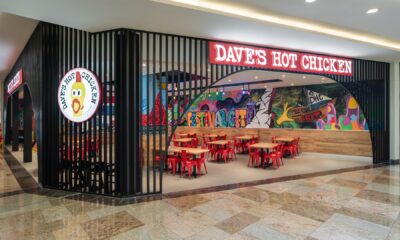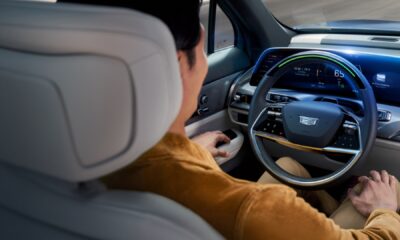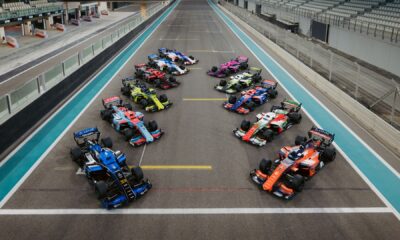Automotive
7 Compelling Reasons to go Electric (EV)

Electric vehicles (EVs) are no longer a futuristic novelty — they’re a fast-growing reality across the GCC, aligning directly with the region’s ambitious sustainability goals. Countries like Saudi Arabia, the UAE, and Egypt have made bold commitments to decarbonization through initiatives like Vision 2030 and Net Zero 2050.
EV adoption is a vital piece of the puzzle — helping reduce greenhouse gas emissions, cut reliance on fossil fuels, and reshape the urban energy landscape. Backed by billions of dollars in public and private investment, this transition is moving quickly.
General Motors, with nearly a century of regional experience, is perfectly aligned with national priorities, empowering the future of mobility with an EV for every purse and purpose. In this feature, we explore seven compelling reasons why electric vehicles are not only viable—but vital—for the Middle East. From lowering lifetime ownership costs to driving innovation, strengthening economies, and delivering performance that rivals or exceeds traditional vehicles, the case for EVs has never been stronger.

1. It’s Cheaper Than You Think
While EVs may cost more upfront, the long-term savings are real — and significant. With fewer moving parts, no oil changes, and lower servicing needs, electric vehicles are much cheaper to maintain. Charging at home and at charging enabled parking spaces is far more affordable than fueling up, in addition to being more convenient. As every city transitions at its own pace, increased access to integrated home-charging solutions and partnerships with local governments and utilities will continue to help reduce adoption costs.
In fact, a 2023 Morning Consult survey showed that 70% of consumers in the UAE and 65% in Saudi Arabia are already considering EVs for their next vehicle — a clear sign of growing market readiness. According to PwC’s eMobility Outlook 2024, the UAE aims for 50% of all vehicles to be electric or hybrid by 2050, with maintenance and operational costs significantly lower than combustion vehicles due to fewer parts and reduced servicing needs.

2. Designed for Comfort, Power & Fun
EVs aren’t just cleaner — they’re fun to drive. Instant torque provides quick, effortless acceleration, while near-silent rides offer comfort in traffic and on long drives. Whether you’re cruising through the city or heading into the dunes, EVs deliver smooth performance, high ground clearance, and surprisingly strong power. From sleek sedans such as the Chevrolet Equinox EV to supercars like the Corvette E-ray and rugged trucks as the GMC HUMMER EV, as well as the luxurious with Cadillac OPTIQ and LYRIQ, there’s an EV to match every lifestyle in the Middle East.
3. The Experience Is Smarter — Personalized, Connected, and Always Evolving
Electric vehicles today are transforming the driving experience. They’re no longer just about getting from point A to point B — they’re intelligent, connected platforms designed to adapt to the needs of each driver.
Features like intuitive touch-screen interfaces, voice control, and over-the-air software updates allow the vehicle to improve over time, often without the need for a visit to the service center. AI-powered safety systems and real-time data integration help make every journey more informed, more convenient, and more secure.
Technology like OnStar adds another layer of support — offering real-time assistance, vehicle insights, and connectivity that enhances both safety and peace of mind on the road.
This shift toward connected mobility isn’t just about smarter vehicles. It’s about creating a more personalized, responsive, and seamless experience for every driver. With an EV, you’re not just purchasing a car; you’re entering a connected ecosystem that evolves with you and adapts to your needs over time.

4. Range Anxiety? Not Anymore
One of the biggest EV myths is that you’ll constantly be searching for a charger. But today’s EVs offer more than enough range for daily driving — and the infrastructure is catching up fast. Most drivers charge at home overnight, just like a smartphone.
The UAE has approximately 1,500+ EV charging points, and aims to install 500 additional nationwide by end‑2025. In 2024, the number of charging stations for EVs in Egypt reached 238. Public and private players are rapidly expanding charging networks in Egypt which targets nearly 1000 stations by end of 2025. As of April 2025, Saudi Arabia has a total of 2,803 charging points, with the majority installed at corporate and residential locations. Their goals include establishing up to 30,000 EV charging stations by 2030. In Jordan, there are 107 EV charging stations, with an additional 611 planned once licensing procedures are complete.
General Motors vehicles are among the top in the market, and some models are the highest range available. For example, the GMC HUMMER EV can go up to 578km of range (GM estimate) on full charge, whereas a smaller car such as the Chevrolet Spark will charge up to 360km. GM is working with partners to ensure accessible charging, including turn-key home solutions and over 110 charging stations across GM regional dealerships. Our collaboration with ministries and smart city initiatives further integrates EV infrastructure with future urban planning, ensuring charging is seamless and accessible.

5. EVs Last Longer Than You Expect
Modern EVs are built to go distance. Studies show they can last as long — or even longer — than traditional petrol or diesel vehicles. Electric motors face less wear and tear, and today’s EV batteries are designed to be durable, even in harsh Middle Eastern climates.
With proper care, an EV can be a long-term investment. Battery packs today are built to last 10 to 20 years, EV batteries in the Middle East typically retain 70–80% capacity after 200,000–240,000 km, enduring 8–15 years even in harsh hot climates. With thermal management and moderate charging habits, degradation remains low—about 1–2% annually, extending useful life toward 20 years.
6. It’s a Smarter Environmental Choice — Without Compromise
You don’t have to be a climate activist to appreciate cleaner air and quieter streets. EVs produce zero tailpipe emissions, helping reduce air pollution in urban areas. Even when accounting for battery production, EVs generate far fewer lifetime emissions than petrol vehicles. In a region working hard to balance economic growth with sustainability, going electric is a smart, future-proof decision that integrates seamlessly with your lifestyle and values.

7. Incentives, Perks & Priority Access
Many governments are offering incentives to boost EV adoption — from free public charging to reduced registration fees, toll exemptions, and designated EV parking spots.
For instance, electric vehicle owners in Dubai enjoy a range of attractive incentives designed to encourage adoption. These include access to over 30,000 free parking spaces, exemption from Salik (toll) fees, and discounted rates on vehicle registration and renewals. In Saudi Arabia, EV owners benefit from a 50% discount on licensing fees compared to traditional gasoline-powered cars, while hybrid vehicles receive a 24% reduction.
Oman introduced a three-year incentive program in 2023 that offered exemptions from customs duties, VAT, and vehicle registration fees for EVs and their parts. These incentives applied to fully electric or hydrogen-powered vehicles registered in Oman and are subject to extension based on government review.
Automotive
Emarat Showcases Emojet’s Aviation Fuel Leadership at Dubai Airshow 2025
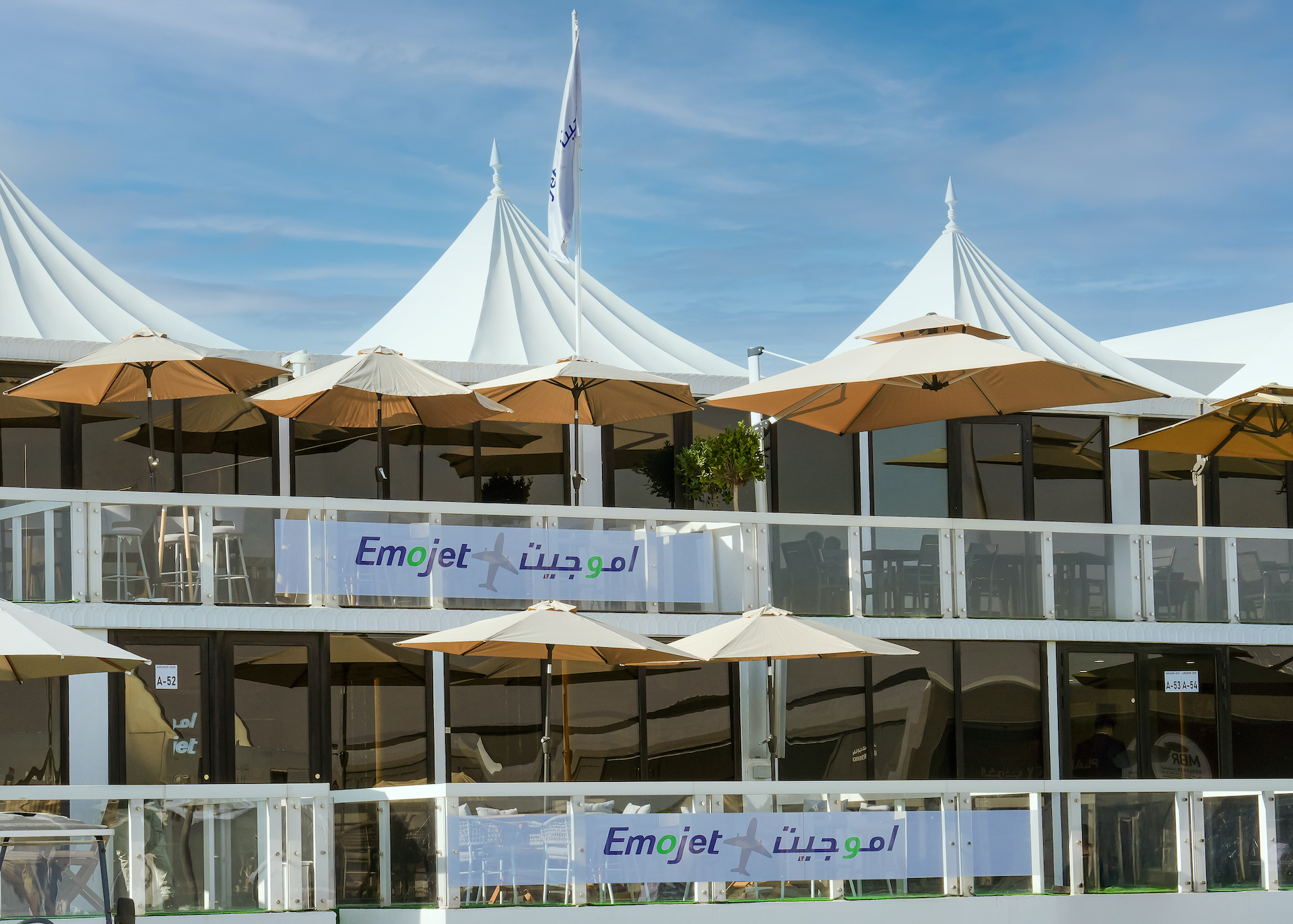
Emirates Petroleum Company PJSC (Emarat), a pioneer in the UAE’s oil and gas industry, will highlight the strength of its aviation fuel business at Dubai Airshow 2025 through its aviation subsidiary, Emojet, one of the leading into-plane fuel service providers at Dubai International Airport and Al Maktoum International Airport (Dubai World Central). Emojet will host airline, airport and industry partners at Chalet A52 from 17–21 November 2025, between 10:00 AM and 5:30 PM at Al Maktoum International Airport.
A key pillar of Emarat’s portfolio, aviation fuel is delivered through Emojet, which has proudly served the UAE’s world-leading aviation industry since 1992. Today, Emojet supplies aviation fuel to many of the world’s leading international airlines at Dubai International Airport and Al Maktoum International Airport, delivering award-winning into-plane services built on safety, reliability and service excellence.
Ali Khalifa Al Shamsi, Chief Executive Officer of Emarat, said, “Dubai Airshow is a natural platform for Emarat and Emojet. For more than three decades, we have been privileged to fuel the growth of the UAE’s aviation sector and support Dubai’s rise as a global hub for passengers and cargo. Through Emojet, we combine best-in-class infrastructure, rigorous safety and operational discipline with a partnership mindset that puts our customers’ network and growth ambitions at the centre. At Dubai Airshow 2025, we look forward to reinforcing our commitment to the aviation ecosystem and exploring new collaborations that will help shape the future of air connectivity in our region.”
At Dubai Airshow 2025, Emojet will focus on deepening existing relationships and building new partnerships with airlines, cargo operators, airports, and logistics players from across the region and beyond. This follows Emojet’s July 2024 agreement with Emirates SkyCargo to supply aviation fuel for the airline’s cargo operations at Al Maktoum International Airport – a model of the strategic collaborations the brand aims to replicate and expand during the show.
Salem Bin Suloom, Vice President – Aviation Sales at Emarat, said, “Emojet’s promise is simple – safe, reliable and efficient fueling, every time. Our customers operate in highly demanding environments, and they rely on us to deliver on-time performance, technical excellence and responsive service across every flight and every turnaround. At Dubai Airshow 2025, our focus is on listening to our partners, understanding their evolving operational needs and identifying new ways we can support them – whether through long-term supply agreements, expanded into-plane services, or new collaborations with airports and operators across the wider region. We warmly invite existing and prospective partners to visit us to discuss how Emojet can fuel their future plans.”
Emojet stands apart through its modern fleet of refuelling equipment, advanced control systems and highly trained operational teams. The company utilises the latest electronic data capture and interface systems to drive efficiency, accuracy and transparency, ensuring that its operations and equipment exceed mandated IATA standards.
Automotive
How Machine Learning Makes Super Cruise Smarter Every Day
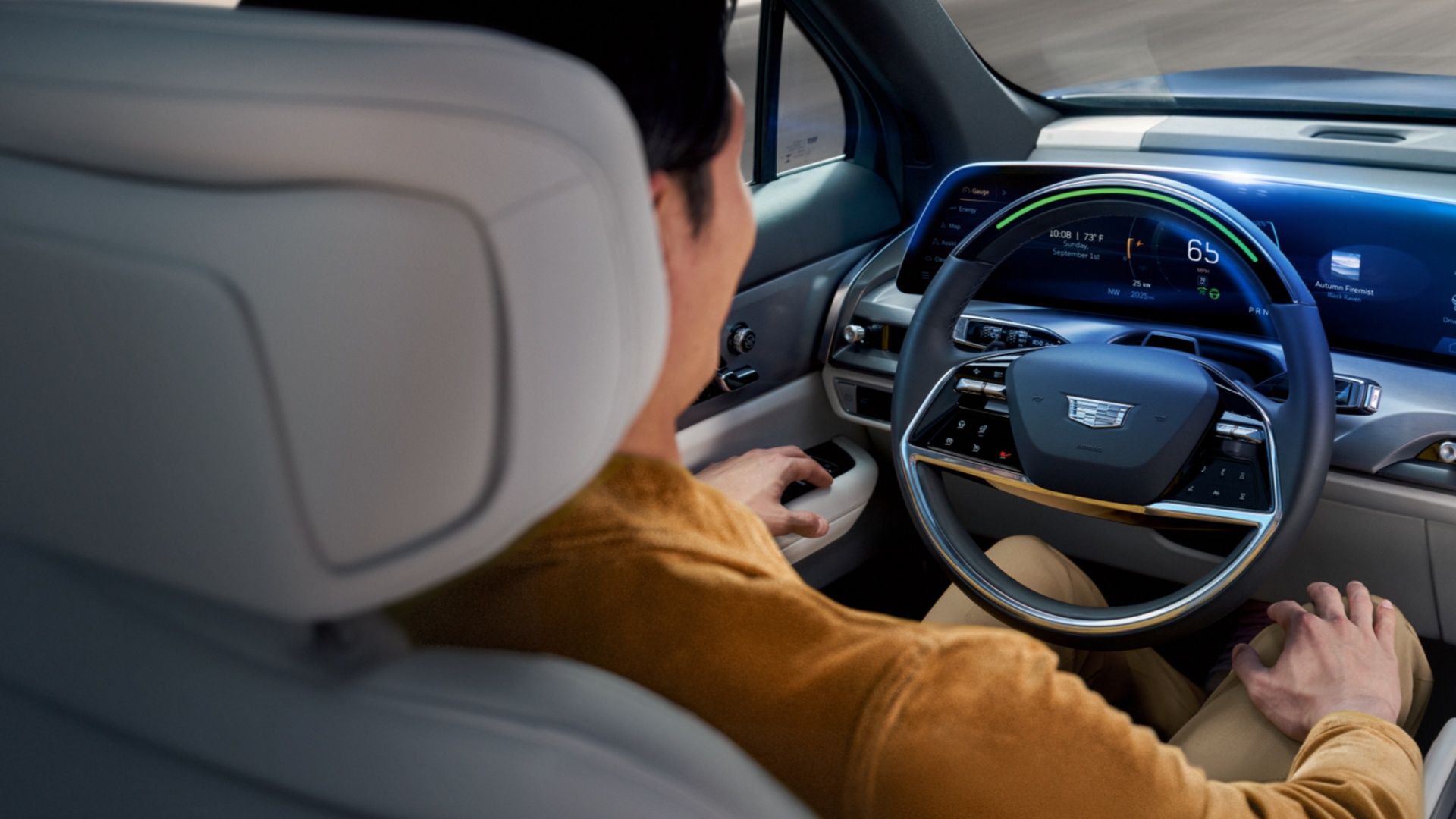
When technology works effortlessly, it’s easy to forget the incredible engineering behind it. That was the goal with GM’s Super Cruise hands-free driver assistance technology. Super Cruise is designed to execute precise lane centering, perform smooth lane changes, interact with a driver’s requests and handle steering maneuvers. These advanced capabilities are managed by a single, modular software stack called the Unified Lateral Controller, or ULC. Looking inside, GM engineers built a self-learning system made up of machine learning algorithms to update the vehicle’s dynamics and controls. The algorithm makes quick decisions to ensure efficiency.
Imagine you’re driving with Super Cruise engaged, and you initiate a left lane change with the turn signal. Super Cruise then starts to shift the vehicle into the left lane. But let’s say you then decide to stay in the current lane, so you signal to the right. Super Cruise will respond by bringing you back to the center of the original lane – a seemingly effortless transition, but one that requires complex and rapid calculations.
Super Cruise needs to maneuver as naturally as possible for drivers to remain comfortable and confident as they drive hands free. Diving deeper, the ULC must consider many data inputs: The curvature of the road from the LiDAR map data, lane geometry from the cameras, trajectory of the vehicle based on current speeds, vehicle load, current weather conditions, and the behavior of surrounding vehicles–all in a matter of seconds.
One of the unique features of Super Cruise is its ability to maintain precise hands-free lane centering while towing a trailer – a capability unmatched in the industry. One of Super Cruise’s standout features is its ability to maintain precise, hands-free lane centering even while towing a trailer—a capability unmatched in the industry and currently available on select GM vehicles. With a trailer attached, ULC automatically accounts in real time for the additional mass and its effects on vehicle dynamics, optimizing steering commands to control both the vehicle and the trailer.
The self-learning system analyzes real-time sensor data, enabling Super Cruise to make more accurate decisions and perform proactive adjustments, improving driver comfort and confidence over time. That allows Super Cruise to adapt for each vehicle and each driver in different environmental conditions.
Let’s go back to our trailering example: Tight lateral control is important for keeping both the vehicle and the trailer centered in the lane. The model learns how the presence of the trailer changes the vehicle’s steering response and works with the ULC to optimize its responses and keep the vehicle and trailer centered in the lane. This model also scales Super Cruise enabled by OnStar , and is now available across 13 vehicle models on select trims, and counting . No matter the shape, size, or weight of the vehicle, the ULC and our self-learning algorithms can adapt, reducing complexity. We’re bringing Super Cruise to consumers on more models, offering consistent, predictable, safe hands-free driving.
Automotive
Goodyear and Peugeot Drive the Future of Intelligent Mobility with the Polygon Concept Car

Goodyear and Peugeot have partnered to shape the future of intelligent mobility with the unveiling of the Peugeot Polygon concept car. This next-generation vehicle features Goodyear SightLine—an advanced suite of intelligent tire technologies—integrated directly into the cockpit for the first time alongside three bespoke Goodyear tires tailored to the car’s versatile configurations.
The Peugeot Polygon is designed to adapt to a range of driving styles through three distinct configurations, Urban, Player and Explorer, and Goodyear’s tires and solutions are uniquely designed to support the vehicle’s purpose.
The collaboration marks a milestone moment and a bold move toward seamless connectivity between vehicle and tire, delivering enhanced safety, performance, and driver confidence.
Goodyear SightLine Technology: Intelligence at Every Turn
Goodyear SightLine is a proprietary suite of smart tire technologies that provides real-time insights for safety and performance improvements in vehicles, from tire properties estimation, tire health information to road conditions. These insights can be displayed directly on the driver’s heads-up display, ensuring clarity and control throughout every journey, or it can be integrated into other advanced systems of a vehicle, allowing it to mitigate situations that are driver dependent today.
Across all Polygon configurations, SightLine features are accessible from the cockpit, offering:
• Tire Maintenance: Integrated tire wear monitoring enables vehicles to automatically adjust performance settings as tires age—helps ensuring optimal handling and safety throughout their lifecycle.
• Safe Driving: SightLine predicts and detects aquaplaning risks, allowing vehicle control systems to respond instantly and maintain stability, even in challenging conditions.
Goodyear delivers insightful journeys to Polygon drivers thanks to its integration with Peugeot Drive-by-Wire technology.
Ben Glesener, senior technology director, Product Development, Consumer EMEA, commented:
“SightLine represents more than technology—it’s a vision for connected mobility. By partnering with Peugeot, we are envisioning an ecosystem where tires become active contributors to vehicle intelligence, shaping a smarter future.”
Already available in several global markets, Goodyear SightLine is not just a concept—it’s a proven smart tire service ready for real-world applications.
Goodyear Tires: Built for Today’s Roads and Tomorrow’s Possibilities
As part of this visionary collaboration, Goodyear engineered three unique tires—each custom-designed to match the aesthetic and performance needs of the Polygon’s configurations:
- The Urban and Player tires feature the legendary Eagle F1 tread pattern, celebrating its 45th anniversary in 2025—a symbol of high-performance heritage.
- The Explorer tire pays tribute to the iconic Goodyear Wrangler, incorporating its rugged tread design to deliver traction to unleash unforgettable off-road experiences.
Beyond performance, the sidewall designs were crafted to visually express a new era of automotive innovation using coloring and laser technologies —where tire aesthetics and functionality converge to push the boundaries of design.
This collaboration showcases Goodyear’s long-standing expertise in combining craftmanship with premium manufacturing technologies to deliver the highest levels of customization from product performance to aesthetics.
Together, Goodyear and Peugeot are setting new trends and driving a new era—where every journey is smarter and more expressive.
-

 Tech News1 year ago
Tech News1 year agoDenodo Bolsters Executive Team by Hiring Christophe Culine as its Chief Revenue Officer
-

 VAR7 months ago
VAR7 months agoMicrosoft Launches New Surface Copilot+ PCs for Business
-

 Tech Interviews2 years ago
Tech Interviews2 years agoNavigating the Cybersecurity Landscape in Hybrid Work Environments
-

 Tech News4 months ago
Tech News4 months agoNothing Launches flagship Nothing Phone (3) and Headphone (1) in theme with the Iconic Museum of the Future in Dubai
-

 Tech News2 years ago
Tech News2 years agoBrighton College Abu Dhabi and Brighton College Al Ain Donate 954 IT Devices in Support of ‘Donate Your Own Device’ Campaign
-

 Editorial12 months ago
Editorial12 months agoCelebrating UAE National Day: A Legacy of Leadership and Technological Innovation
-

 VAR1 year ago
VAR1 year agoSamsung Galaxy Z Fold6 vs Google Pixel 9 Pro Fold: Clash Of The Folding Phenoms
-

 Cover Story9 months ago
Cover Story9 months agoUnifonic Leading the Future of AI-Driven Customer Engagement










